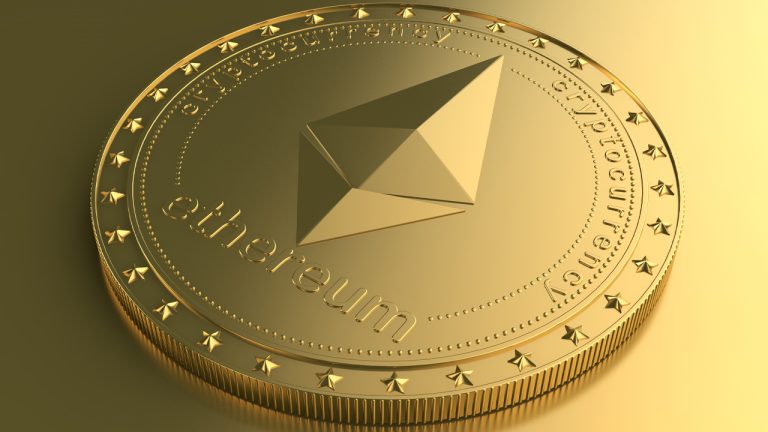 The Zano blockchain’s recently completed Zarcanum hard fork (HF4) will enable users and organizations to create custom tokenized assets that meet their specific needs. These custom tokenized assets or confidential assets, will be untraceable on the Zano blockchain. The team believes that without privacy and security, cryptocurrencies cannot achieve the much-hyped widespread adoption. Hosting Multiple […]
The Zano blockchain’s recently completed Zarcanum hard fork (HF4) will enable users and organizations to create custom tokenized assets that meet their specific needs. These custom tokenized assets or confidential assets, will be untraceable on the Zano blockchain. The team believes that without privacy and security, cryptocurrencies cannot achieve the much-hyped widespread adoption. Hosting Multiple […] Polygon’s Napoli hard fork, incorporating the RIP-7212 upgrade, marks a significant advancement in interoperability with mainstream tech by introducing support for the elliptic curve digital signature algorithm commonly used across the internet. The upgrade also aligns with Ethereum’s recent Denchun hard fork improvements, enhancing block space efficiency, limiting self-destruct opcode scope, and reducing memory copying […]
Polygon’s Napoli hard fork, incorporating the RIP-7212 upgrade, marks a significant advancement in interoperability with mainstream tech by introducing support for the elliptic curve digital signature algorithm commonly used across the internet. The upgrade also aligns with Ethereum’s recent Denchun hard fork improvements, enhancing block space efficiency, limiting self-destruct opcode scope, and reducing memory copying […]
Binance’s BNB Chain is set for two upgrades that are aimed at improving finality of the network and compatibility with other EVM blockchains.
Binance’s proprietary BNB Smart Chain (BSC) is set to undergo two hard forks through August 2023 that are aimed at reducing the possibility of a malicious blockchain reorganization and increasing the compatibility with other EVM blockchain networks.
The Plato and Hertz upgrades are scheduled for Aug. 10 and Aug. 30 respectively, following extensive testing. The Plato upgrade, which has already taken place, introduces BEP-126. The latest evolution proposal implements a fast finality mechanism that is expected to rule out the ability for blocks to be reverted.

Arno Bauer, Senior Solution Architect at BNB Chain, unpacked the specifics of the network upgrades in conversation with Cointelegraph. The fast finality mechanism is expected to reduce the chance of chain reogranization and stabilize block production, while allowing users to access accurate information from the latest finalized block instantly.
“Overall, BEP-126 aims to enhance blockchain security and efficiency on the BNB Smart Chain by introducing a fast finality mechanism.”
Bauer added that finality is a core concept of blockchain technology, referring to the point at which a transaction or block of transactions can no longer be altered or reversed. Finality remains a crucial component in maintaining trust and preventing double-spending in blockchain systems.
BEP-126 introduces fast finality through a series of steps. Validators begin by proposing a block to the network which is propagated to other validators. Validators then sign for the block using their private key, creating a vote message. Voting aggregation then takes place, with validator votes gathered into a pool and aggregated if the direct parent block has enough votes.
Related: Binance Smart Chain and Binance Chain become BNB Chain
Validators must follow specific rules when voting for blocks, an example being not publishing two distinct votes for the same height. The finality rules also stipulate that a block is ‘justified’ if there’s an attestation in the child block's header, while it's finalized if it's justified and its direct child is justified.
The fork including the highest justified block is considered the longest chain, even if other chain forks have a higher difficulty sum. Producing blocks and finalizing blocks also have different requirements in terms of the number of validators needed.
Lastly, BNB Chain validators are rewarded for voting, and those who violate the vote rules are slashed in a similar manner to Ethereum’s proof of stake protocol.
The Hertz hard fork is earmarked for Aug. 30 and is aimed at keeping the BNB Chain up to date with the latest development of Ethereum Virtual Machine (EVM) blockchains. As Bauer explains, the BSC needs to keep its block and transaction structures as well as its base EVM updated to match Ethereum's recently implemented Berlin and London forks.
“Therefore, for compatibility reasons it is important that those EIPs are also enabled on BSC to ensure a smooth development and ecosystem growth.”
Bauer said that the fast finality mechanism should provide a more secure environment for decentralized applications (DApps), while faster transaction finality should improve responsiveness and efficiency of DApps running on BSC.
Magazine: Deposit risk: What do crypto exchanges really do with your money?
The Optimism layer-2 network saw less than 300,000 transactions per day around the time of the upgrade, but this number increased to over 500,000 afterward.
Transactions on the Optimism network surged 67% following its June 7 “Bedrock” upgrade, according to a June 26 Twitter thread from blockchain analytics firm Nansen. The network had been seeing less than 300,000 transactions per day before the upgrade, but this figure increased to over 550,000 by the middle of June.
Since Optimism's Bedrock upgrade on June 6
— Nansen (@nansen_ai) June 26, 2023
Its daily transactions have increased by about 67% to ~500k
And gas fees are reduced by about 50% to ~$50k pic.twitter.com/9ACIMMFHbl
Optimism, a layer 2 of Ethereum, implemented its Bedrock hard fork on June 6. It was intended to reduce deposit times and fees, as well as increase the network’s security. According to the June 26 Nansen report, daily fees have fallen from $80,000 worth of Ether (ETH) directly before the upgrade to only $50,000 as of late June.
Optimism saw a sharp increase in transactions immediately following the hard fork, rising to over 400,000 from approximately June 5 to 9. Volume rose slower after the initial spike, reaching a peak of over 550,000 on or around June 15. It then started to fall slowly, reaching 500,000 transactions per day by the end of the time data was collected around June 23, according to a chart posted in Nansen’s Twitter thread.
Related: Binance’s BNB Chain introduces layer-2 testnet powered by Optimism
The top Optimism app leading up to the report was the decentralized credential protocol Galxe, which saw over 528,000 transactions during the week. The USD Coin (USDC) stablecoin had the second-highest transaction count at over 170,000. The remaining top five apps on Optimism included the Stargate Finance cross-chain bridge, the Perpetual Protocol futures trading app and the Gnosis Safe multisignature wallet.
The Bedrock upgrade was part of a broader set of proposals to create a “Superchain” consisting of multiple blockchain networks that rely on the same software for security and interoperability. Coinbase confirmed that its Base network would join Optimism as part of the Superchain. The Base team announced its “Path to Mainnet” preliminary roadmap on May 24.
 Ethereum had issues processing transactions on May 11, 2023, at around 4:13 p.m. Eastern Time on Thursday, and transaction finality issues lasted for roughly 25 minutes. Currently, developers do not know what caused the issue and the blockchain is now running normally. Ethereum Network Experiences Temporary Transaction Processing Issue The Ethereum blockchain was unable to […]
Ethereum had issues processing transactions on May 11, 2023, at around 4:13 p.m. Eastern Time on Thursday, and transaction finality issues lasted for roughly 25 minutes. Currently, developers do not know what caused the issue and the blockchain is now running normally. Ethereum Network Experiences Temporary Transaction Processing Issue The Ethereum blockchain was unable to […]
Ethereum's supply across whale addresses has dropped consistently since March 2020, offset by greater retail interest.
The share of Ethereum (ETH) held by so-called whale addresses has dropped since Ethereum's Shapella upgrade in mid April, suggesting that large investors may be leaning bearish in t near term.
The amount of Ether held by addresses with 1,000-10,000 ETH, or "whales," was over 14.033 million ETH on May 1, according to Glassnode data. In comparison, the count was 14.167 million ETH on April 12, when Shapella went live on Ethereum.

Interestingly, a week before the Shapella upgrade, the Ethereum whale cohort held 14.303 million ETH, the highest amount in 2023
Ether's price is down over 3.5% since the Shapella upgrade— suggesting that several whales may have indeed "sold the news."
Interestingly, other address cohorts also showed a decline, including sharks (100-1,000 ETH), fishes (10-100 ETH), crabs (1-10 ETH), and even mega-whales (10,000+ ETH).
Only shrimps (<1 ETH) accumulated during the period, with their net position slightly increasing from 1.79 million ETH on April 12 to 1.80 million ETH on May 1.

Shapella enabled investors to withdraw the ETH locked via staking, which some argued would increase selling pressure.
Since the Shapella upgrade, investors have withdrawn over 1.97 million ETH worth around $3.6 billion, according to Beaconcha.in. Nevertheless, no major changes in cryptocurrency exchanges' ETH balances have been seen to date.
Historically, less Ethereum whales typically means heightened downside risk for ETH price.
Whale activity typically acts as a leading market indicator. So, rich investors accumulating typically precedes a price rise, and vice versa.
The price-whale positive correlation existed until March 2020, as shown in the chart below. Afterward, retail mania took over alongside the Federal Reserve's quantitative easing and the correlation snapped.

Notably, ETH price rallied from $110 in March 2020 to over $4,950 in November 2021 despite the declining whales. The inverse correlation continued throughout the price downtrend to around $850 in June 2022.
But since then, whale holdings have risen by nearly 1 million ETH. Meanwhile, ETH's price has more than doubled to around $1,850, hinting at a possible return of the price-whale correlation, which would be a bullish sign for Ethereum.
The $2,000-level is an important psychological resistance level for ETH/USD that bulls have been unable to break upon multiple attempts in 2023.
Related: Ethereum price outlook weakens, but ETH derivatives suggest $1.6K is unlikely
On the daily chart, ETH/USD holds above the short-term support provided by its 50-day exponential moving average (50-day EMA; the red wave), near $1,840. A successful rebound from here opens $2,000-$2,125 as the next upside target range in Q2.

Conversely, a break below the 50-day EMA risks sending ETH toward its 200-day EMA (the blue wave) near $1,670, down about 10% from current price levels.
This article does not contain investment advice or recommendations. Every investment and trading move involves risk, and readers should conduct their own research when making a decision.
 On Wednesday, April 12, 2023, at 6:30 p.m. Eastern Time, Ethereum’s Shapella upgrade was successfully implemented, enabling validators to withdraw staked ether. Data reveals that more than 860,000 ether is poised for unlocking, and 77,000 ether is expected to be withdrawn on Thursday. Ether’s price has experienced a surge, rising 6% against the U.S. dollar […]
On Wednesday, April 12, 2023, at 6:30 p.m. Eastern Time, Ethereum’s Shapella upgrade was successfully implemented, enabling validators to withdraw staked ether. Data reveals that more than 860,000 ether is poised for unlocking, and 77,000 ether is expected to be withdrawn on Thursday. Ether’s price has experienced a surge, rising 6% against the U.S. dollar […]
Ethereum staking withdrawals are picking momentum. But they have not been able to cause a major selloff as many had anticipated post the Shanghai upgrade.
The price of Ethereum's Ether (ETH) token came just a few dollars from hitting $2,000 a day after the launch of the network's long-anticipated Shanghai upgrade.
On April 13, Ether's price gained roughly 4% to reach an intraday high of $1,996 on Coinbase, ignoring the potential selloff pressure the Shanghai upgrade could potentially bring to the market.

To recap: the Shanghai hard fork, also known as "Shapella," enables users to withdraw their ETH from Ethereum's proof-of-stake smart contract.
As of 09:00 UTC, April 13, over 98,000 ETH worth around $194.8 million has left Ethereum's voting balance reserves since the Shanghai launch a day ago, according to Nansen. In other words, nearly $200 million in potential selling pressure has entered the market.

But Ether's price rise since the Shanghai launch suggests that the market had no problem absorbing any selling pressure arising from this event so far. It's also possible that most users have decided to hold onto their ETH staking rewards rather than sell them in anticipation of further gains.
About 15% of Ethereum's total supply in circulation, nearly 120.4 million ETH, is currently staked.
Interestingly, more than 70% of the ETH staked is still underwater compared to current price levels, according to data gathered by Dune Analytics. This reduces the possibility of a sell-off in the near term from Shanghai's staking withdrawals.
The ongoing run-up in the Ethereum market has left ETH/USD slightly overbought, raising the likelihood of a short-term price correction this month.
Related: When levees break, liquidity flows — Analyzing Ethereum Shapella and liquidity staking derivatives
Notably, ETH's daily relative strength index (RSI) is merely two points below its overbought threshold of 70. In addition, ETH/USD tests a critical resistance level near $1,990, which in May 2022 and August 2022 preceded price pullbacks.

A repeat of this scenario likely means a correction toward its 50-day exponential moving average (50-day EMA; the red wave) near $1,750 in April, down about 10% than the current price levels. This ETH price level is also close to the historical support/resistance line.
Conversely, a decisive breakout above $2,000 — a psychological resistance level — could have Ether price start its potential climb toward $3,000.
This article does not contain investment advice or recommendations. Every investment and trading move involves risk, and readers should conduct their own research when making a decision.

After months of delays, Ethereum validators can finally withdraw their staked Ether and rewards from the Ethereum Mainnet.
The Shapella hard fork has officially been executed on the Ethereum Mainnet— meaning that Ethereum validators can finally withdraw their staked Ether (ETH) from the Beacon Chain.
The long-awaited upgrade took effect at 10:27 PM UTC on April 12.
Through Ethereum Investment Proposal EIP-4895, staked ETH was pushed from the Beacon Chain to the Ethereum Virtual Machine (EVM) otherwise known as the execution layer, making withdrawals possible.
It is the most significant upgrade since The Merge on Sept. 15 and it moves Ethereum one step closer towards a fully functional proof-of-stake system.
Ethereum proof-of-stake chain has upgraded to Shapella. Withdrawal is now enabled
— terence.eth (@terencechain) April 12, 2023
This closes the loop of the original beacon chain design. Validator can deposit -> withdrawal.
The hard fork allows for partial and full withdrawals of staked ETH, which can theoretically unlock 18.1 million ETH when Shapella is forked, currently equating to over $34.8 billion.
However several mechanisms are in place to prevent a flood of the ETH supply from hitting the market, according to the Ethereum Foundation.

Volumes from the top five Ethereum staking platforms suggest holders are hedging against the unknown until after ETH withdrawals are enabled.
The Ethereum network’s planned Shanghai hard fork is nearly here. Planned for April 12, this is the first major upgrade since The Merge in September 2022. The “Shapella” upgrade (a combination of the two major proposals Shanghai and Capella), includes EIP-4895 which enables validators to withdraw staked ETH from the Beacon chain (Consensus layer) to the EVM (execution layer). The execution layer is the fun and friendly Ethereum users have come to know and love.
Why is this a big deal? With just over 18 million ETH currently staked (valued at just over $33 billion at the time of writing), some of which has been locked up for years, the possibility of these tokens flooding an already teetering market is enough to get some holders ready to sell the news once withdrawals are enabled.
For holders who are both long and short ETH post-withdrawals, it’s likely to be a significant event, and on-chain activity suggests many feel the same: activity around liquid staking derivatives (LSDs) can be a useful gauge for what the market might do post-unlock.
What are liquid staking derivatives? They are a relatively new financial instrument born of DeFi that function like bearer instruments for staked ETH. Similar to how borrowing and lending protocols give users a share token to represent locked collateral (think Aave’s a-tokens), staking ETH generates a wrapped asset used to claim the equivalent amount of Ethereum from the staking platform. When a staker deposits ETH with major platforms like Lido, Rocketpool, Frax, Stakewise and now Coinbase, they receive a platform-specific flavor of LSD. Because staked tokens are illiquid, these wrapped assets allow stakers to continue earning rewards while securing the network without completely giving up the opportunity to participate in other activities within DeFi.
Liquid staking derivatives aim to solve these problems by allowing staked assets to be traded on secondary markets. This means that stakers could access the value of their staked ETH before the Shanghai upgrade enables withdrawals or, in the future, while maintaining their staked position. For example, a staker could use their wrapped ETH as collateral on another platform, or cover an unexpected expense by selling their LSD on a secondary market.
Though the markets have seen what seems to be an increasing string of green days, with Ethereum rapidly catching up to Bitcoin’s year-to-date performance, ETH's gains are set against a backdrop of volatility among LSDs and staking tokens.
Lido’s LDO hasn’t recaptured its high from early March and has maintained a resistance at $2.75. The largest staking protocol by nearly an order of magnitude, Lido currently offers some of the highest staking rewards among major providers with an average APY around 10%. The high rewards are no surprise: Lido took in nearly 50 million ETH in fees and 5 million in revenue in March, with April on track to meet or exceed those numbers.

RocketPool’s RPL fared much better with a 25% increase over the last thirty days. The wrapped asset issued by the number three staking provider by TVL, rETH, has historically traded at a premium to ETH and other LSDs, likely a result of the provider’s reputation as the most decentralized staking solution available to holders today, making rETH a desirable LSD to hold.
Over the last thirty days, RocketPool has seen over $46 million in inflows, with many likely hoping to cash in on rETH’s premium when withdrawals are enabled. RocketPool’s average APY according to DeFi Llama is around 3.65% which isn’t as high as other providers, but with over 1,800 active RocketPool nodes, the decentralized nature of the protocol is attractive. Addresses holding RPL have been steadily increasing as well.
Conversely, LSDs from the two top staking providers, Lido and Coinbase both trade at a discount to spot ETH. Together representing nearly 90% of all staked ETH, it’s unsurprising that Lido and Coinbase have both come under scrutiny as centralizing entities given their concentration of staked ETH.

Despite RPL’s impressive performance and StakeWise’s native token SWISE’s 15% gain, Frax seems to have come out the winner.
Frax Ether has seen the most significant jump in total value locked over the last 30 days compared to the other top ten staking providers at 14% growth for a $244 million valuation. Despite the increase in TVL, Frax totaled only $3.1 million in inflow over thirty days, putting the protocol just above StakeWise’s $2.6 million.

Liquid staking derivatives like the wrapped Ether offered by staking providers is an important part of the Ethereum ecosystem much like plasma is an essential part of human blood. DeFi, NFT trading and GameFi are all interlinked, sometimes more subtly than others.
LSDs perform an important function of maintaining liquidity within the Ethereum ecosystem. Currently, over 15% of all Ether that exists is staked with a Beacon chain validator (meaning this doesn’t include any ETH being used as collateral on borrowing/lending platforms).
Considering that a non-trivial amount of that ETH has been locked for years, through one of the toughest bear markets on top of that, indefinitely freezing this much capital (worth over $33 billion at the time of writing) would have a lasting and noticeable effect on the entire ecosystem.
Over the last 30 days though, trying to hedge against the chaos post-Shapella by holding unstaked ETH didn’t perform much better than holding an LSD: ETH is up 31% compared to stETH’s 30%, rETH’s 30%, while Coinbase’s cbETH is up 32% and Frax’s LSD is up 34%.
Overall, liquid staking derivatives are an important development in the staking ecosystem, as they help to address some of the challenges associated with staking, while also expanding the pool of potential participants in the ecosystem.
Related: Ethereum traders show uncertainty ahead of Apr 12’s Shapella hard fork: Report
Withdrawals being enabled for staked Ethereum on the Beacon chain means that proof-of-stake Ethereum has reached a point of sufficient stability and security, and the stakers who participated in securing the network will be able to retrieve their staked funds.
Regardless of the immediate impact of enabled withdrawals, proof-of-stake Ethereum’s continued success relies on incentivizing ETH holders to validate the network, and liquid staking derivatives have proven to be an effective mechanism to do so.
The views, thoughts and opinions expressed here are the authors’ alone and do not necessarily reflect or represent the views and opinions of Cointelegraph.
This article does not contain investment advice or recommendations. Every investment and trading move involves risk, and readers should conduct their own research when making a decision.